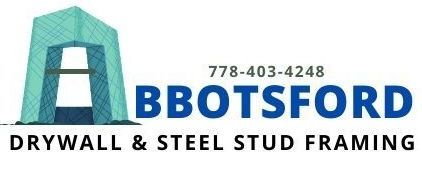Abbotsford Drywall and Steel Stud Framing
Drywall in Vancouver: A Guide to Drywall Sizes and Thickness
Are you planning a home renovation or getting involved in a construction project? Then this blog is your go-to resource. We'll explore the world of drywall in Vancouver, covering everything from its basic definition and common uses to the various types you can choose from. But that's not all. We'll also guide you through Vancouver's standard sizes and thickness options.
Overview of Drywall
Drywall, or plasterboard or wallboard, is a construction material made primarily of gypsum plaster pressed between two sheets of heavy paper. It's a popular alternative to traditional plaster and lath, offering a quicker and easier installation.
The Role of Drywall in Construction
In construction, drywall is a go-to solution for creating walls and ceilings. It plays a crucial role in providing a smooth, paint-ready surface. Depending on your chosen type, it also offers varying insulation and fire resistance levels.
Common Uses:
Residential
- Living room
- Bedrooms
- Kitchen
- Bathroom
It's especially useful in home renovations where you want to add new walls or cover old ones.
Commercial
- Offices
- Retail spaces
- Other commercial establishments
In these settings, specialized types of drywall, like fire-resistant or soundproof versions, are often used to meet building codes and regulations.
Different Types of Drywall
When it comes to choosing drywall, one size doesn't fit all. Let's explore the different kinds of drywall available in the market:
1. Standard Drywall
Standard drywall is your everyday, all-purpose type that you'll see in most residential buildings. It's commonly used in living rooms, bedrooms, and ceilings.
Pros
- Economical
- Easy to install
- Widely available
Cons
- Not suitable for moisture-prone areas like bathrooms.
- Lacks specialized features like fire or sound resistance.
2. Moisture-Resistant Drywall
Known as “green board,” moisture-resistant drywall is designed for areas prone to moisture and humidity, such as bathrooms and basements.
Benefits
- It contains a water-resistant green paper cover.
- Less likely to mould or deteriorate when exposed to moisture.
- Ideal for tile backing in wet areas.
3. Fire-Resistant Drywall
Fire-resistant drywall is often a building code requirement in commercial buildings and multi-family homes. It's especially crucial in spaces like stairwells or hallways serving fire exits.
Fire Rating Classifications:
Type C
Offers a fire-resistance rating of at least one hour.
Type X
Provides enhanced fire-resistant properties compared to Type X.
4. Soundproof Drywall
Soundproof drywall is usually used when noise reduction is crucial, such as home theatres, bedrooms in busy urban areas, or office meeting rooms.
Benefits
- Denser material construction helps to dampen sound.
- Reduces the level of noise transfer between rooms.
- More expensive but offers superior sound isolation.
Standard Drywall Sizes
Like most other places, drywall is usually available in standard sizes in Vancouver. The Canadian Home Inspection shares that you will typically find sheets similar to the following:
Standard Lengths
8, 10, 12, or 14 feet
Standard Widths
4 or 4.5 feet
Tips for Selecting the Right Size:
- Consider room dimensions to minimize waste.
- Larger sheets work well for bigger, open areas to reduce the number of seams.
- Smaller sizes are more manageable for DIY projects or tight spaces.
Thickness
Drywall thickness varies based on the application and the area of the house. Below are some common thicknesses, according to Lee Wallender:
1/4-inch
-
For curved walls and arches
3/8-inch - For residential interiors
1/2-inch - Standard size for walls and ceilings
5/8-inch - Often used for commercial settings or as a fire-resistant option
Why Choose the Right Thickness?
- Thicker drywall provides better sound insulation and fire resistance.
- Thinner sheets are easier to install but less durable.
Installation Tips
Drywall installation could look intimidating, but with the right tools and knowledge, it's a task that can be accomplished by either skilled professionals or competent DIYers.
Tools Required
- Tape measure
- Utility knife
- T-square
- Drywall screws
- Screw gun or drill with a drywall screw setter bit
- Drywall saw or rotary tool
- Joint compound (also known as mud)
- Joint tape
- Sandpaper
- Mud pan
- Taping knives (various sizes)
Basic Steps in the Installation Process
- Measure and Cut
Measure the area where the drywall will be installed, then cut your drywall sheets according to those measurements. - Hang the Sheets
Hang the top sheets first. Use a screw gun to secure the drywall screws into the wall studs. - Tape the Seams
Apply joint tape over the seams where different drywall sheets meet. - Apply Joint Compound
Applying joint compound over the taped seams and screw holes using a taping knife. You'll likely need multiple coats.Sand the Surface Sand the surface once the joint compound is dry to create a smooth finish. - Prime and Paint
Apply a coat of primer and then paint the wall as desired.
Dos
- Measure twice and cut once to minimize waste.
- Don't forget to stagger your seams to strengthen the overall structure.
Don'ts
- Check for any electrical wiring or plumbing before cutting into a wall.
- Don't use short screws, as they will not adequately secure the drywall to the studs.

Balance Aesthetics, Safety, and Functionality With Our Services
Installing drywall sets the stage for your room's aesthetics, safety, and functionality. Always consider the room's purpose and consult local building codes to ensure you make top-notch choices for your needs.
If you now need professional services for your
drywall in Vancouver, consult our skilled team for personalized advice tailored to your project's specifics. Professional guidance can save you time, effort, and money in the long run. Contact us at Abbotsford Drywall and Steel Stud Framing for your next project and see your vision come to life.
